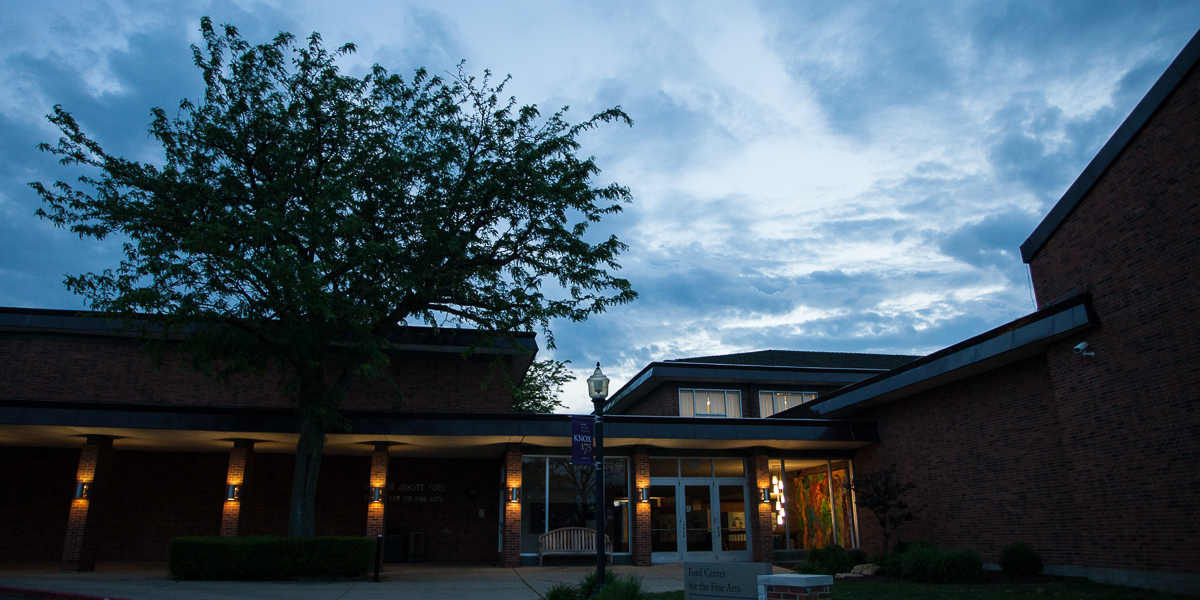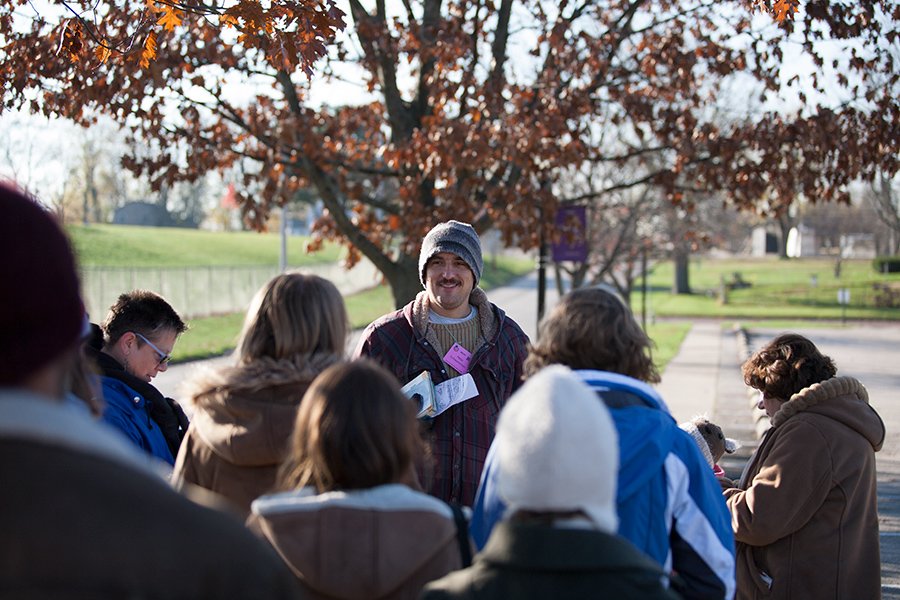

Venture Boldly

Office of Communications
2 East South Street
Galesburg, IL 61401


by Ashley Wolfgang '14 and Laura Pochodylo '14
Knox College hosted the second annual Prairie Fire Bioneers Conference October 26-28, 2012, on the Knox campus. Affiliated with the National Bioneers Conference held in San Rafael, California, Knox's event was one of 24 satellite conferences across the country, and it attracted attendees from several communities, including Chicago, Macomb, and Galesburg, Illinois.
The Prairie Fire Bioneers gathering featured a plethora of events, including keynote speaker Julia Butterfly Hill; an "Admiring Life Walk" led by Peter Schwartzman, associate professor and chair of environmental studies at Knox (photo at top of page); and a variety of workshops involving local food and farming, building bat homes, and more.
Here are some conference highlights:
"How to Start Growing Food Now, Where You Are"
John Lane, a 2009 Knox graduate, led an intensive workshop explaining how to grow the maximum amount of food in a limited space. The "real issue," he said, is "healing the land that you're on," Lane explained. "You are building and healing the soil when you plant."
Lane, a music teacher and market gardener, said he was deeply influenced by Green Oaks Term, an immersive academic experience in which Knox students live and learn together at the college's Green Oaks Biological Field Station. Students reside in Schurr Hall, sharing cooking and cleaning duties, and they share an academic curriculum with interdisciplinary classes in natural history, art, and anthropology-sociology.
By starting to grow your own food, Lane said at the workshop , "it's an important political step. You can't make enough money to buy good food, if it's even available." He suggested a variety of methods and tools to start or expand home gardens.
By using these methods, which include building greenhouses or placing pots on your apartment deck, growing your own food is far from impossible if you "strive for a really human scale," Lane explained. When starting a garden, you must think about reasonable and manageable sizes, he added.
"I really do believe that intensive home-style growing, drawn from home gardeners, is... bringing communities together," he said. "I think we just have to try it. We all have to be a part of the innovation."
"Bats and Building Bat Houses"
Hosted by Knox Advocates for Recycling and Environmental Support (KARES), participants in this workshop were able to learn about the dangers that bats of Illinois are currently facing, and what can be done to save them from extinction.
Despite common misconceptions about bats that derived from pop culture figures such as Batman and Dracula, bats should not be feared, for they help balance the insect population, and they pollinate a variety of fruits and plants.
Although Illinois is home to a variety of migrant and semi-migrant bat species, only a few are native. These include: the little brown bat, Northern long-eared bat, Southeastern bat, Eastern Pipistrelle, the big brown bat, and the endangered Indiana bat.
These bats are currently being plagued by "white-nose syndrome," a non-native disease. Since 2006, this syndrome has killed more than 5.6 million bats by shortening their periods of hibernation.
KARES recommends that spelunkers disinfect their equipment when traveling from cave to cave so the disease will not spread to different bat populations.
Another way for humans to assist the survival of bats is to construct bat houses in locations about a quarter-mile away from a body of water. Made out of Western Red cedar, the houses should be painted black in order to conduct heat, and placed about 15 to 30 feet above ground.
Alex Zimay, a Knox sophomore from Northbrook, Illinois, particularly enjoyed this session, explaining that she "wanted to learn more about bats."
"This is a great thing for Knox to offer," she added.
"Why We Need You to Become a Yeoman Farmer"
John Curtis, a self-proclaimed "yeoman" from Macomb, Illinois, led a workshop on the benefits of community-supported agriculture (CSA) programs.
A yeoman, Curtis explained, is someone who cultivates his own land. Curtis is the owner and operator of Barefoot Gardens, a CSA program he runs from his own land. A former Peace Corps volunteer and teacher, Curtis "fell in love with agriculture" and started gardening on his grandfather's farm.
"It is the hardest way to make a real living," Curtis said. "Farmers who choose to grow good-quality food do so despite the lack of economic incentives."
In a CSA, people can buy a share of produce and receive fresh harvested produce throughout the growing season. He also uses his CSA to reach out to his share owners and teach gardening classes, and to educate them about local food.
Education is essential to the future of farming, he explained.
"Only 2 percent of the population is aware of local food," Curtis said. "If you walked to the door of an American home and handed them a full chicken, there's a good chance they wouldn't recognize it as food."
Curtis urged his audience, a mix of farmers from Macomb and southern Illinois, as well as Monmouth College students, to consider the power of "human-scaled agriculture" like his garden, and to continue educating others about local food.
Published on November 09, 2012